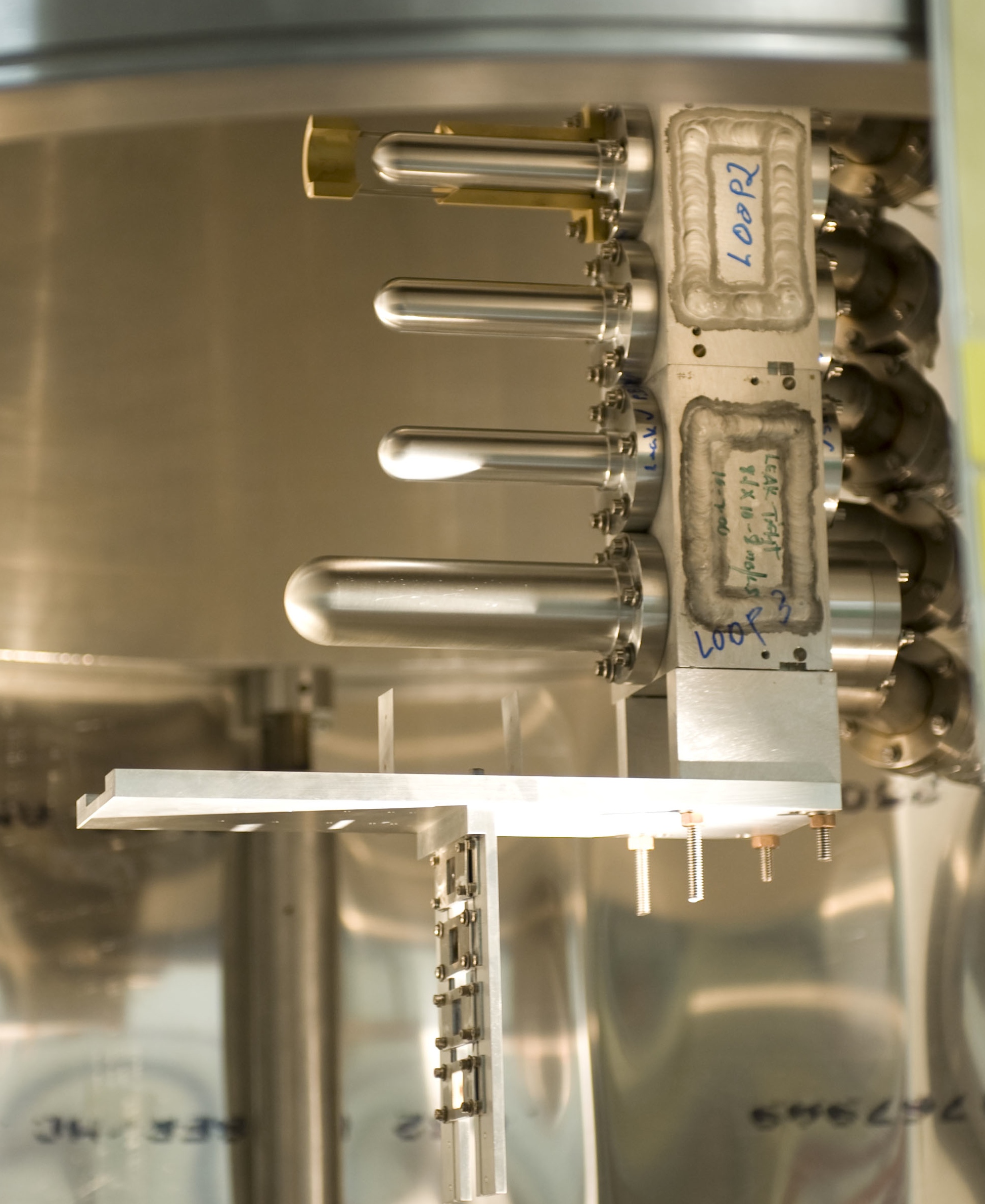The Jefferson Lab Experimental Hall A Target System. This and other pressure systems at Jefferson Lab are featured in Will Oren’s hour-long SAF130A class, which he says is, “Mainly about awareness,” he says. “It’s about knowing when you don’t know something and thinking to yourself, ‘Hey there’s energy here and this is what could happen to me, maybe I need to look for help.’”
Pressure system safety means knowing when you don’t know.
Pressure systems are everywhere, from underground steam pipes throughout a city, to combustion engines in cars and even in most of the equipment at Jefferson Lab. Because such systems are ubiquitous at the laboratory, Will Oren and DOE want to help members of the lab community stay safe when working around these systems, which means, he says, “Knowing when you don’t know.”
Oren is the manager of the Engineering Division and chair of the eight-person pressure systems committee at Jefferson Lab. One of his jobs is to ensure the safety of workers around these systems, which he says he hopes to do by instilling a sense of how serious the business of correctly working with pressure systems really is.
So, what exactly constitutes a pressure system? How will you know if you encounter one? And how can you stay safe around one?
Understanding Pressure Systems
“A pressure system is a system that has vessels, piping and instrumentation,” explains Oren. “Basically, it’s anything that has fluid—or what we would traditionally think of as fluid: water, gasoline, oil and even gas, like helium, nitrogen and compressed air. When there is internal or external pressure, there is a pressure differential, which is energy.”
Oren likens a pressure system to a bicycle tire. “A bicycle tire could be inflated to 120 pounds-per-square inch (psi),” he says. “If you’ve ever popped a bicycle tire, it’s pretty loud. That’s a lot of energy right there, and that’s a simple pressure system. Because the tires have that energy, it can be hazardous if that energy gets released in an uncontrolled way.”
The lab has many types of pressure systems.
“Cryogenic distribution systems, superconducting magnets—those have pressures of some kind because they have fluid flowing through,” says Oren. “Temperatures are near four Kelvin, and if there is any in-rush of heat, you’re going to vaporize that liquid at a 700-to-one expansion factor, so you have to be able to vent the vapor in a controlled way. It can be hazardous if that energy gets released in an uncontrolled fashion.”
To that end, the Pressure Systems Safety Committee is focused on providing guidance on designing, fabricating, operating and maintaining pressure systems around the lab and educating users about safety.
Pressure Systems at Jefferson Lab
To ensure optimal safety, teams who design pressure systems for use at Jefferson Lab follow American Society of Mechanical Engineers (ASME) codes and guidelines. There are about 30 engineers and physicists at the lab who have completed a strict educational requirement to be qualified to design pressure systems.
Yet, Oren notes, the ASME does not always have codes related to the non-standard equipment and materials required for the work performed at the lab. In such a case, pressure systems Design Authorities (DAs) design equipment based on equivalent measures and then put their proposed design through a lengthy peer review process.
“We make reasonable assumptions, perform testing to validate design choices and then conduct peer reviews of the resultant design,” says Oren. “The entire process is document, so if something does go wrong, we will be able to trace back to see if it was a design flaw, materials flaw, fabrication flaw, or maybe we saw pressures we didn’t plan on seeing, or there was corrosion we didn’t know about and we should have been inspecting more frequently.”
Hazards When Things Go Wrong
Despite the best efforts of Oren and his team, there are still occasions when things go wrong.
“We have a very good record. Usually, accidents happen not because we don’t have a program, but because people are not applying the program,” says Oren. He cites a recent situation in which a glass window burst and hit a student in the face. “It was a backfilling exercise where there was a vacuum space being backfilled with nitrogen and the student didn’t put a relief valve on the equipment. It filled with too much pressure and shattered the window.”
The student was injured but recovered. From that situation—and several others like it—the Pressure Systems Committee made system-wide changes to their educational requirements for lab users.
“We realized our system wasn’t as robust as it needed to be from a training point-of-view,” he says. “We made the student training system more robust. Then, from a pressure systems point-of-view, we changed the way we screened folks through the training requirements. We determined that if someone is working on equipment that has a pressure system, that person needs to have training.”
Keeping members of the lab community safe around pressure systems is the primary focus of the hour-long class, SAF130A. “The class is mainly about awareness,” he says. “It’s about knowing when you don’t know something and thinking to yourself, ‘Hey, there’s energy here and this is what could happen to me, maybe I need to look for help.’”
Oren also wants the lab community to be aware that, in addition to his class, there are two additional pressure systems training classes for pressure system owners and design authorities, a detailed Pressure and Vacuum Systems Supplement to the EH&S Manual that gives engineers guidelines for how to properly build their systems and representatives from the pressure systems committee available throughout the lab.
By Carrie Rogers
Contact: Kandice Carter, Jefferson Lab Communications Office, 757-269-7263, kcarter@jlab.org


